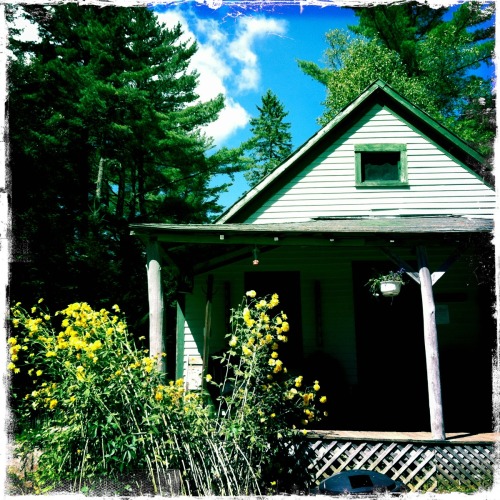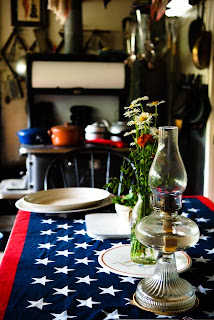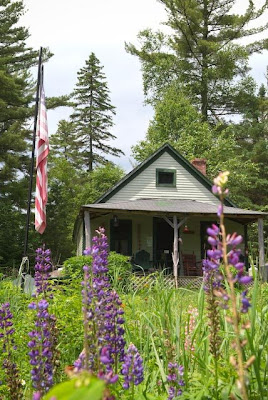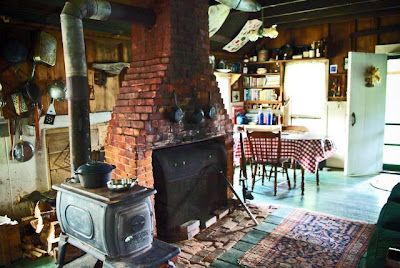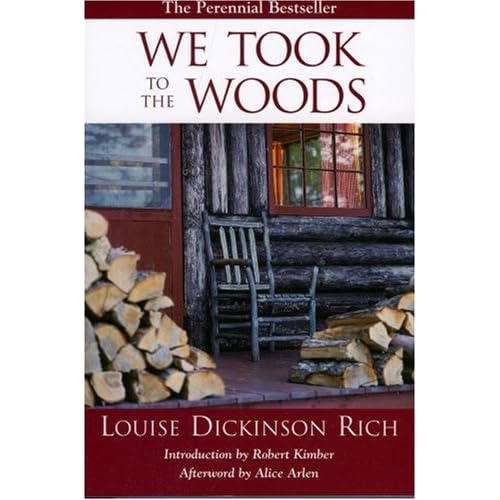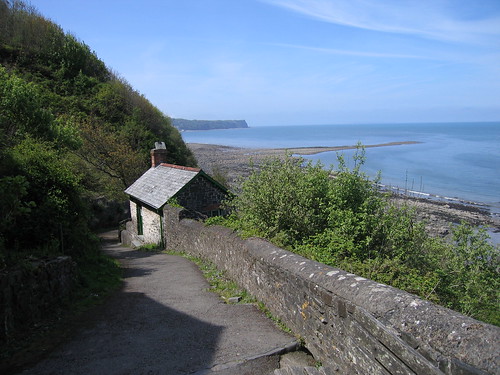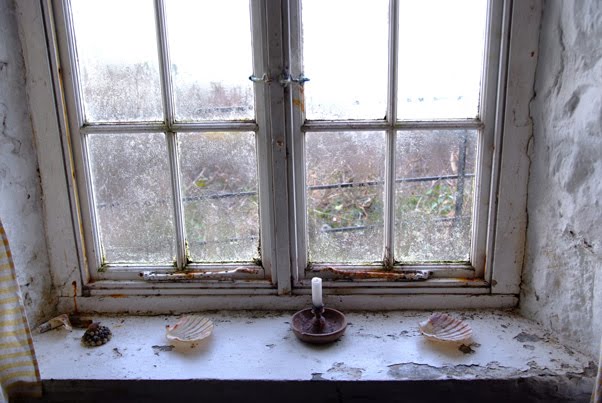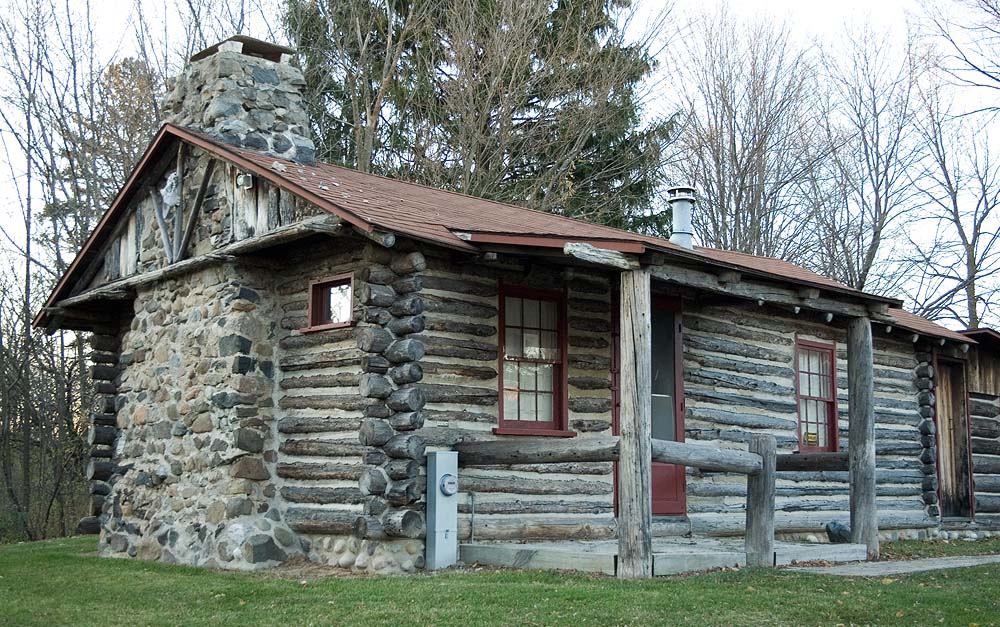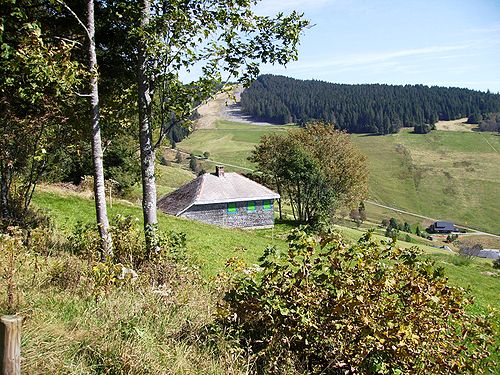 Dale Mulfinger
Dale Mulfinger was born and raised on a dairy farm in Minnesota, and the rural landscape and vernacular architecture have informed his many designs. After graduating from the University of Minnesota, he worked nationally and internationally before becoming a Founding Partner in 1983 of what is now SALA Architects, Inc. He has taught architectural studios at the University of Minnesota and other schools since 1976. He is a fellow of the American Institute of Architecture and author of four books including
The Architecture of Edwin Lundie and
The Cabin. He, along with wife and chef Jan Mulfinger, have lived in the Linden Hills neighborhood of Minneapolis for 40 years, raising two daughters.
Cabinology
What Matters Most Dale Mulfinger lives in cabin world. Amidst the lakes and forests of Minnesota and Wisconsin, he intimately knows about cabin life through owning his personal cabin and also by designing cabins for others.
“People generally pick a location [for their cabin] based on something they want to do there. They may be trout fishermen, or they may be cross country skiers, or sailing people. They’ll have some type of activity that draws them toward a particular location. And once they’re drawn there, they’ll pick a very particular piece of land that has hills or trees associated with it…and, the specifics of that piece of land will really shape what the possibilities of the cabin can be.”
Mulfinger elaborates further, “We tend to go to remote cabin sites to enjoy an intimate friendship that we don’t often experience in our daily lives.” Living the cabin life is an opportunity to enjoy each other’s camaraderie in a pristine location. Cabins should be open-ended places that are easy to use and built for playful, relaxing comfort.
Dale reminds us that we’re not going to our local furniture store to furnish our cabin. “I tend to call the style of this type of furniture ‘early attic.’ It’s those things that possibly went up into your attic for awhile or grandma’s attic for awhile, and then they were pulled out to go into the cabin.”
Cabins also become a place where you can “…recycle those windows and doors, kitchens cabinets and other things that are no longer beneficial to you in your place in the city but certainly can be used at your cabin.” If you remodel your primary residence, then you can reuse products and materials at your cabin; it’s another way to practice green living.
“We all live a little bit differently. We all have different sets of furniture and things we bring to the cabin. We all have different needs in terms of how big a cabin should be and in terms of serving the people that we’re going to bring there with us. So, all of that leads to a very personal interpretation of what size, shape and
form a cabin is going to be right for you.”
Cabins give us a chance to get away from our normal routines. We enjoy activities in the cabin that we don’t normally do in our primary residence. Mulfinger continues, “I think it’s fun to step forward and do things that are a little unique, things that are possibly done only when you’re at your cabin. Whether you’re cleaning fish or canning fruit or whatever you may be doing, it’s fun to do it at the cabin in a special way and make it something that others can participate in.”
No Single Best Way
From traditional to modern, cabins embrace a range of architectural styles. “There are huge possibilities as to what we can build a cabin with today. There are old systems that have been resurrected, such as loga and timber frame construction that are available to us. There are also normative systems, which is building out of studs and rafters. Or, you can build it out of SIP panels–structural insulated panels.” Your personal taste, the local architecture and the knowledge of the local contractors will largely determine the method and style of construction.
There’s also an opportunity to hybrid a design combining elements of both traditional and modern styles. There’s no single best way to build. “What we have in our cabin in definitely a hybrid. I think people would refer to it as a stick-built cabin but we expose a lot of the timbers in it so you get a bit of the timber look. They [the timbers] are doing real work. They’re not superflous. They’re not just decoration. They’re actually performing real structural tasks. Some of the vertical columns are tree trunks so they add a whimsy and fun atmosphere to the place.”
Mulfinger also points out that the work of building a cabin doesn’t need to be accomplished in one summer. Construction can be extended over several years. “I think it’s a pretty common pattern, particularly for people who do it themselves that they build enough to make it habitable to begin with and then they gradually add to it. Or, they might build the whole shell then gradually embellish the interior over time. There are many possibilities for how you can invest over time at your cabin.”
It seems that most hideaways capture their unique appeal by assigning a cabin a distinctive name. “Often times, you’ll give your cabin a name. Or, if it’s your name, a family name that you’re going to put on it, you might extend that name to mean something. So, it might be ‘Smith Haven’ or if your name might be Wood then it would be ‘Raven Wood.’ There might be some adaptation from your name to the name of this place that you think of going to for respite and retreat.”
Dale continues, “Naming not just your place is important but you might name rooms within your cabin. In our case, our cabin has two bedrooms, one is called ‘The Maple Syrup Room’ and the other one is called ‘The Eagle’s Nest.’ ”
Building a Legacy
Cabins are also multi-generational and multi-family. “The cabin I own currently, I share with another couple, not a relative just friends, and that has to do with the fact that our cabin is four hours from our home, and we’re not going to use it that much. Therefore, it’s always beneficial to share those dollars with someone else and make sure that others have the opportunity to use it.
“Many cabins have been handed down so that a son and a daughter of an original owner now share that cabin and the grandchildren. Sometimes that can be a problem out into the future as generations are no longer very close to one another. They have a little thinking to put forth regarding how to see the future of the legacy of their cabin.
“I think a lot of having a cabin has to do with making sure it’s a place that really reflects the things that are important to you. So, the cabin is a place where the art you hang on the wall often has a lot of meaning and it isn’t the kind of high art that you might think of hanging on the wall of your home in the city. Somehow, in your home in the city, you often use art to create a sense of stature about yourself that demonstrates your learned knowledge of the art world.
“When you get to the cabin, something that Aunt Helen–some macarame she created–or Uncle Bob’s big fish that he caught, are all fair game to have up on your cabin wall. So, I think the kind of art we have in a cabin is very different. Each of those pieces of art tends to tell a story that is important to us, a story we want told in our cabin.”
 The Cabin
Inspiration for the
The Cabin
Inspiration for the
Classic
American Getaway
Dale
Mulfinger and Susan E. Davis (Taunton)
There are thirty-seven cabins, huts, shacks, out-of-town homes here, divided into four sections: Rustic, Transformed, Traditional, and Modern. They appear all over the U. S. and Canada --- Wisconsin, Minnesota, Washington, New York, North Carolina, Missouri.
Some use logs, some use 2x4s, some use galvanized steel. Some are elegantly sited; others are just out there in the country somewhere. And the photographs as so luscious that you want to move in tomorrow.
There are some of reconstructed old barns. Several look like log cabins (complete with rainwater barrel). In the Blue Ridge, Bernard Flippin used logs salvaged from a falling-down tobacco barn. In Montana, Louis Shelden got 113 acres (cost him $2, total)...and built a two-story cabin overlooking Alpine Gulch.
One of the authors --- Dale Mulfinger --- got an inexpensive lot in Wisconsin, on a lake, put in a cabin with loft, ceiling-to-floor windows, what he calls a "minimalist" structure.
Thomas Blurock's cabin looks out over Paradise Valley in Montana. He's an architect, but he said that in his shack, "nothing is the right size:" the windows and doors are too wide, tall, or high for an 850 square foot log cabin. It's gorgeous.
James Stageberg built one in Wisconsin that looks just like a purple teakettle [See Fig 2, above]. The architect Frank Gehry built one near Minneapolis that took "100 white pine logs ranging in size from 9 to 14 inches." The tiled-in stove is an eye-popper.
My favorites are the ones that are simple, rustic, nothing fancy --- like the one my dad and I visited three or four times a year [not featured here] in Nassau County, Florida, at Seymour's Point.
Gus Lowenstein lived in Jacksonville, ran an old furniture store there, but his heart was out in the scrub-pine country. He built his shack out of scrap loblolly for the walls and floor, corrugated steel for the roof, oak studs, none-too-straight, to hold it up off the ground. (That gave the fleas, ticks, and hounds and skunks a place to hang out; it also kept the house from flooding when the nor'easters blew through).
At night we used the front porch for sleeping in the cool; during the day, you could perch on the bamboo swing-chair and watch the Nassau River flow by. There was no electricity, but we had Coleman lamps and flashlights. For water, there was ice cold branch-water --- that's what Gus and my dad and their friends used for their tall glasses of whiskey. There were screens on all the doors and windows, else the no-see-ums would come in and eat you alive.
It was on the front porch, one morning, when I had just woken up, back then on that sweet-moss morning, that I had my first vision --- the big one, about time, and the river, and the meaning of life. You remember.
The Nassau River, at peak tides, could run 8 - 12 knots. The fishermen around there --- we called them "crackers" --- knew the tides, most often didn't fight them: you went out on the low tide, came in on the high. But that day Billy-Joe Turner, from down the river came past on his way to the marshes in his boat. He was using an old five-horsepower Johnson, one that must have been built in the thirties. It didn't have the ooomph that the outboards do now. And his longboat must have weighed a half-a-ton.
Billy Joe was heading right into the flood tide. He was going out at exactly the speed the tide was coming in. The river wasn't very wide there, mud-flats on one side, Seymour's Point on the other. I could hear the motor going, putt-putt --- see Billy Joe in the back, sitting there huched over, in his muddy coveralls, with his old straw hat.
I knew something was happening --- I could see it, the wake, the boat bobbing a bit. But Billy Joe wasn't moving. For the full twenty minutes I watched, he made scarcely any progress at all. Sometimes he would head closer to the shore, and forge ahead, and then he'd go further out in the stream, and fall back again.
We watched, me, and the sun, and the cowbirds and the jays, and the hounds --- but even then, me not being more than twelve or thirteen --- I knew, as we all come to know, sometime in our lives, that his journey, whatever journey it is, was something special. We may think we are going somewhere, but the truth is that our journey may well be something else. Billy Joe, sitting there, bobbing in the wake, moving, moving...and all the while not moving at all --- making that endless journey, the one that all of us will make someday, if we haven't already.
--- L. W.
Milam
http://www.ralphmag.org/AY/briefs.html
http://whatmattersmost.neas.com/?p=42
http://www.salaarc.com/architects/dale-mulfinger
 Dale Mulfinger was born and raised on a dairy farm in Minnesota, and the rural landscape and vernacular architecture have informed his many designs. After graduating from the University of Minnesota, he worked nationally and internationally before becoming a Founding Partner in 1983 of what is now SALA Architects, Inc. He has taught architectural studios at the University of Minnesota and other schools since 1976. He is a fellow of the American Institute of Architecture and author of four books including The Architecture of Edwin Lundie and The Cabin. He, along with wife and chef Jan Mulfinger, have lived in the Linden Hills neighborhood of Minneapolis for 40 years, raising two daughters.
Dale Mulfinger was born and raised on a dairy farm in Minnesota, and the rural landscape and vernacular architecture have informed his many designs. After graduating from the University of Minnesota, he worked nationally and internationally before becoming a Founding Partner in 1983 of what is now SALA Architects, Inc. He has taught architectural studios at the University of Minnesota and other schools since 1976. He is a fellow of the American Institute of Architecture and author of four books including The Architecture of Edwin Lundie and The Cabin. He, along with wife and chef Jan Mulfinger, have lived in the Linden Hills neighborhood of Minneapolis for 40 years, raising two daughters.




